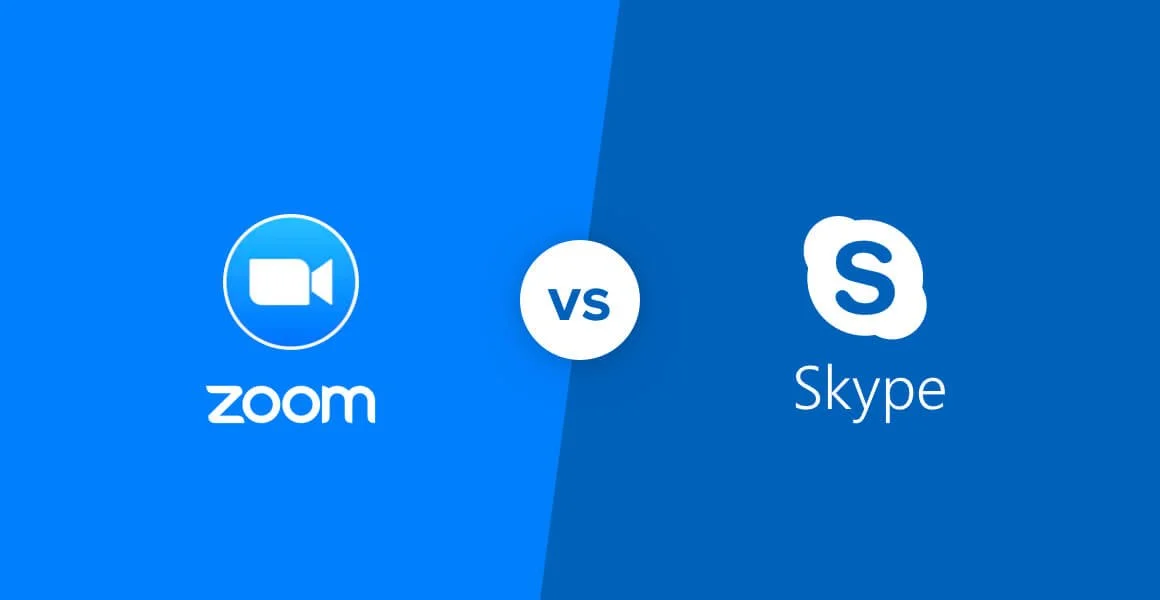Analyzing the Dominance Shift: Factors Behind Zoom’s Rise Over Skype During the COVID-19 Pandemic
With the onset of the COVID-19 pandemic, Zoom emerged as the preferred platform for video conferencing, eclipsing Skype, which had previously been one of the most popular options for virtual communication. This shift was marked by a rapid increase in Zoom’s user base and engagement while Skype struggled to retain its dominance. This paper explores the key factors that contributed to Zoom’s success over Skype, examining elements such as user experience, technology, scalability, reliability, branding, and adaptability.
Background: Skype and Zoom’s Origins
Skype was founded in 2003 and became one of the first mainstream platforms for video and voice calls over the internet. By the mid-2000s, Skype had gained widespread popularity, particularly among individuals looking to make free international calls. Microsoft acquired Skype in 2011 and integrated it with its suite of software products, making it a standard communication tool for personal and business use.
Zoom, launched in 2013 by former Cisco engineer Eric Yuan, initially targeted enterprise customers with a focus on delivering a stable, high-quality video conferencing experience. However, during the COVID-19 pandemic, Zoom became a household name, appealing to a much broader audience as businesses, schools, and social groups adopted it as their go-to virtual meeting platform.
Key Factors for Zoom’s Success Over Skype
1. Superior User Experience and Simplicity
One of the most significant reasons for Zoom’s popularity over Skype is its user-friendly interface and ease of use. Zoom prioritized a straightforward, intuitive experience that made it easy for anyone to join a meeting, even those unfamiliar with video conferencing tools. The ability to join a Zoom meeting with a single click—without requiring an account or extensive setup—was particularly appealing during the pandemic when users of all ages and technical abilities needed quick access to virtual communication.
Skype, in contrast, had a more complicated setup, especially when integrated with Microsoft accounts. Users often found themselves navigating through multiple screens, sign-ins, and update prompts before joining a meeting. Skype's interface also became more cluttered over time as new features were added, making it less intuitive for first-time users.
2. High-Quality Video and Audio Reliability
Zoom gained a reputation for providing a consistently high-quality video and audio experience. The platform’s underlying technology, developed to optimize bandwidth, ensured that meetings could continue with minimal disruptions even on weaker internet connections. This feature became critical during the pandemic when millions of people were working or learning remotely, often from locations with varying internet stability.
Skype, although it had years of development behind it, was known for connection issues and frequent call drops. Many users experienced delays, lag, or audio/video mismatches on Skype, particularly during high-traffic times. Zoom’s consistent video and audio reliability gave it a competitive advantage over Skype in terms of user trust and meeting quality.
3. Scalability and Adaptability for Large Meetings
Zoom was designed from the start with scalability in mind, allowing large groups to participate in meetings. With plans that could support up to 1,000 participants, Zoom quickly became the preferred choice for businesses, educational institutions, and events. It also offered a range of meeting control features, such as breakout rooms, screen sharing, and participant muting, making it suitable for both small and large gatherings.
Skype, while effective for smaller, casual calls, was not optimized for large meetings or enterprise-level scalability. Skype for Business offered more capabilities but required a paid subscription and was later replaced by Microsoft Teams, further confusing users. Zoom’s adaptability to various use cases—from small meetings to large webinars—provided a level of flexibility that Skype could not match.
4. Innovative Features and Customization Options
Zoom has consistently introduced innovative features that enhance the virtual meeting experience. Its virtual background feature, for instance, allows users to replace their background with images or videos, helping them maintain privacy or create a more professional appearance. Zoom’s breakout rooms allow for smaller group discussions within a larger meeting, making it ideal for classrooms, workshops, and conferences.
While Skype added some features over time, such as screen sharing and background blurring, it did not innovate at the same pace as Zoom. Skype’s focus was primarily on one-on-one or small group calls, limiting its functionality for educational and business needs. Zoom’s regular introduction of new features kept users engaged and attracted organizations seeking a flexible platform.
5. Branding and Market Positioning
Zoom’s branding played a significant role in its success. During the COVID-19 pandemic, “Zoom” quickly became synonymous with video conferencing, turning into a verb much like “Google.” The brand’s positioning as a reliable, user-friendly solution for both professional and personal use helped it achieve widespread recognition. Zoom’s marketing also effectively targeted business and education sectors, positioning it as a vital tool for continuity during lockdowns.
Skype, in contrast, struggled to maintain a clear identity. After being acquired by Microsoft, it was integrated with other Microsoft products, but it lost its standalone identity in the process. Skype for Business was eventually replaced by Microsoft Teams, which added to the brand’s dilution. Zoom’s focused branding and clear market position allowed it to stand out as the go-to video conferencing tool.
6. Adaptation to the Pandemic Environment
Zoom’s rapid response to the increased demand during the COVID-19 pandemic was a significant factor in its success. Recognizing the surge in remote work and learning, Zoom adapted by offering free, extended meeting durations for educational accounts and quickly scaling its infrastructure to support a massive increase in users. This adaptability and responsiveness made Zoom a trusted tool during an unprecedented time of need.
Skype, despite its experience in the market, was slower to adapt to the sudden changes brought by the pandemic. Users who turned to Skype for remote work or education often found it lacking in the tools and support they needed, leading them to switch to Zoom. Zoom’s proactive adjustments and generous offers solidified its position as the pandemic’s virtual meeting leader.
7. Monetization and Subscription Flexibility
Zoom offered a freemium model with a free version that allowed up to 40 minutes per meeting with up to 100 participants. This free option, paired with flexible paid plans for businesses, educators, and other organizations, made Zoom accessible to a wide range of users. By offering scalable options, Zoom provided value for individual users, small businesses, and large organizations alike.
Skype’s monetization was less flexible, with the free version often considered limited in functionality, while Skype for Business required a Microsoft subscription. Zoom’s clear and accessible pricing model made it more appealing for users who needed quick, affordable solutions for various purposes, from virtual classrooms to corporate meetings.
Conclusion
Zoom’s rise over Skype can be attributed to a combination of user-centric design, scalability, reliability, innovation, and effective branding. Its focus on providing a seamless, high-quality video conferencing experience made it the preferred platform for both individuals and organizations during a time when remote communication became essential. Skype, despite its established presence and early successes, struggled to adapt to the new demands and competition, particularly in the face of Zoom’s rapid innovation and flexibility.
As Zoom continues to evolve and Skype’s influence wanes, it is evident that the future of video conferencing will favor platforms that prioritize user experience, adaptability, and innovation. While Skype remains a functional tool for casual communication, Zoom’s dominance in the professional and educational sectors underscores the importance of scalability, reliability, and responsiveness in a highly competitive landscape.
References
Turner, L. (2021). The Zoom Phenomenon: How One Company Captured the Remote Work Market. Journal of Communication Technology, 15(1), 33-47.
Chen, Y., & Wang, H. (2020). Comparing User Experience: Skype vs. Zoom. Digital Transformation Review, 9(3), 55-66.
Malik, A. (2021). The Rise of Zoom and the Changing Landscape of Video Conferencing. Technology and Society Journal, 17(2), 82-91.
Roberts, S. (2020). Adapting to a New Normal: Why Zoom Succeeded During the Pandemic. Journal of Organizational Change and Innovation, 12(4), 20-37.

